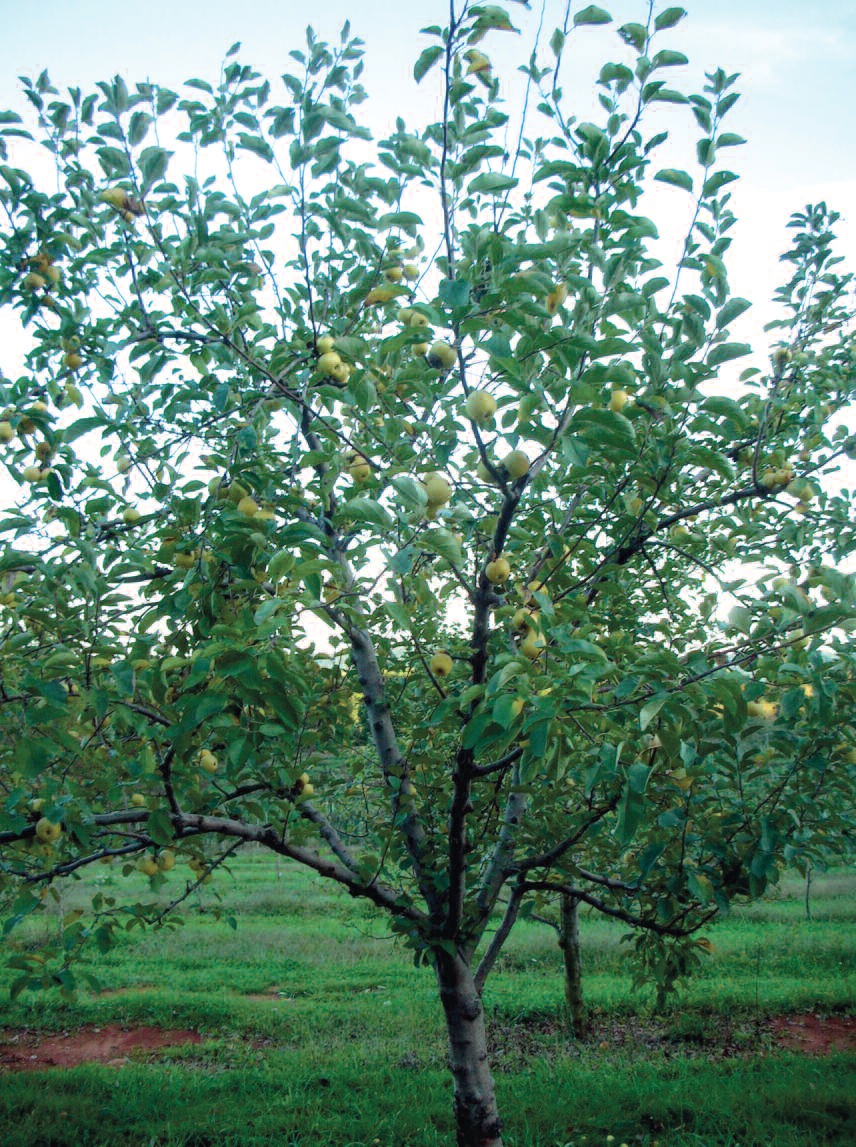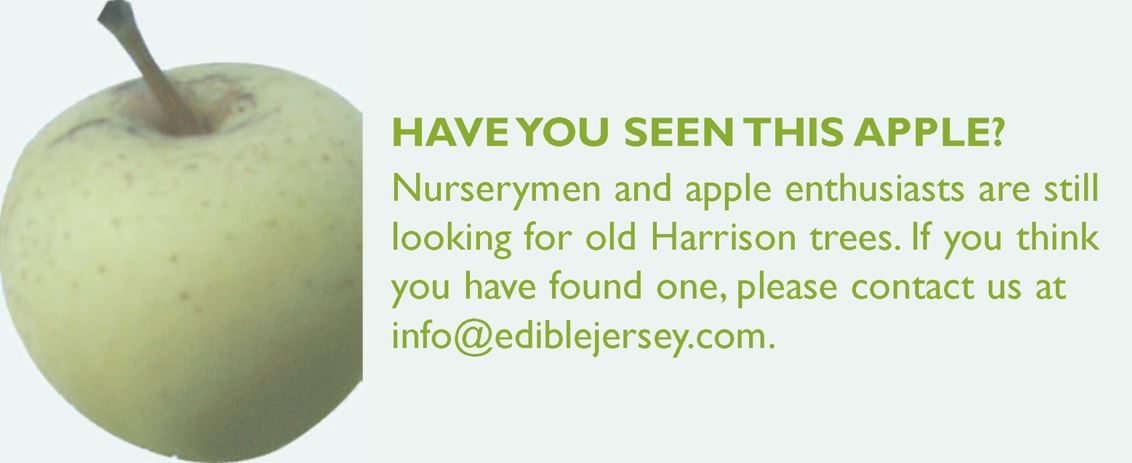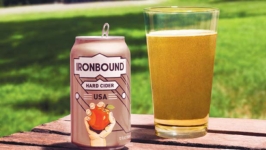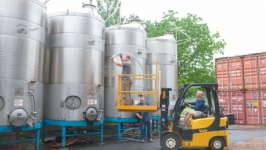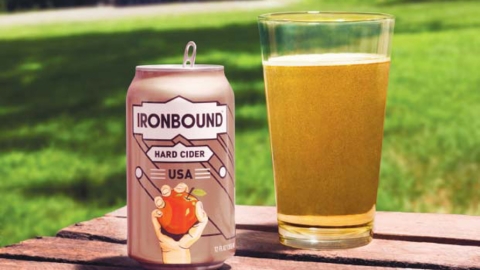LOST & FOUND: The Search for the Harrison Apple
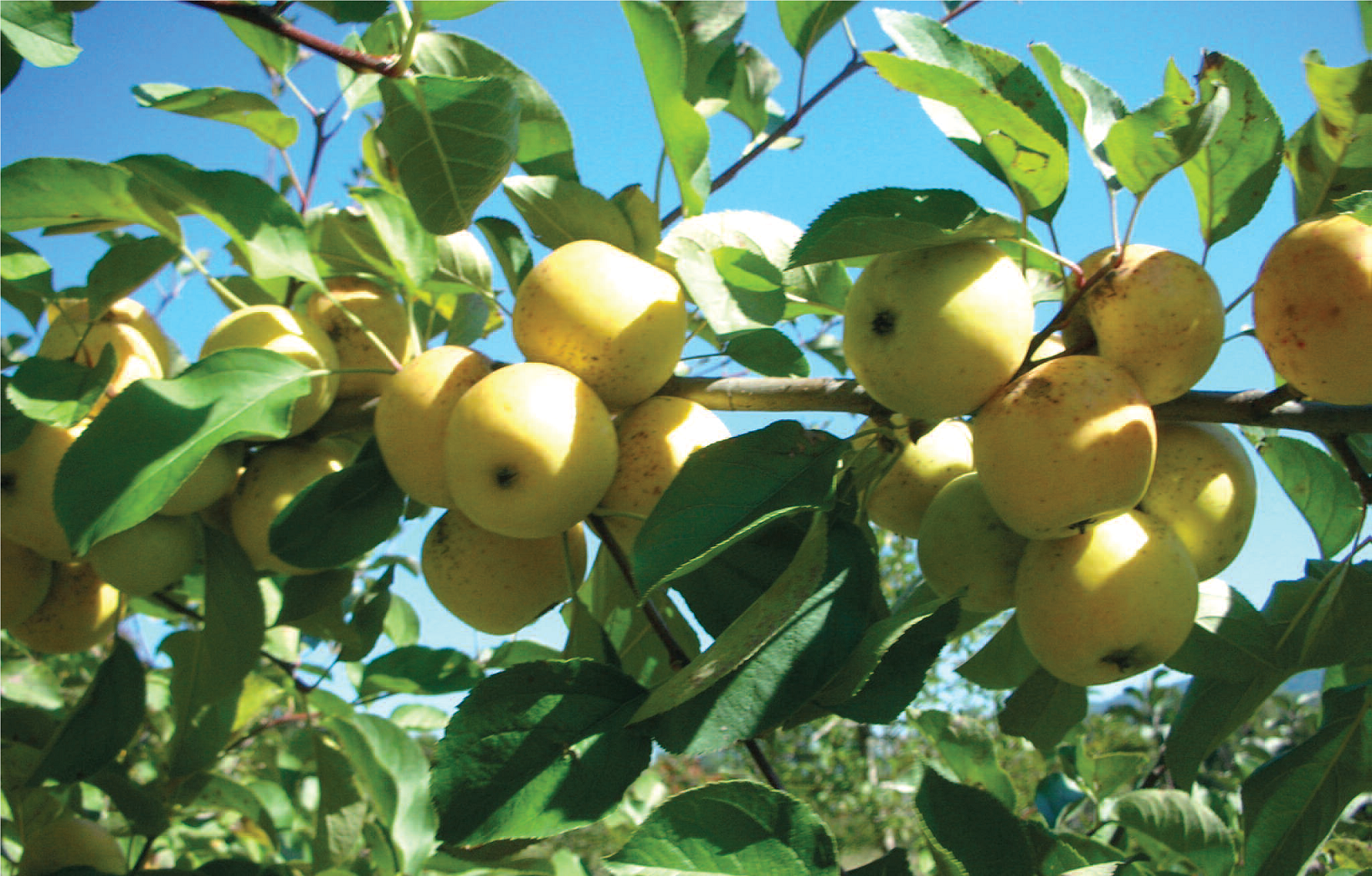
Photos courtesy of Chuck Shelton, Albemarle Cider Works, and Diane Flynt, Foggy Ridge Cider
The rise, fall and rebirth of the Harrison cider apple
Scattered around Newark are ghostly reminders of the city’s former industrial might. Silent factories and fading signage offer clues to the industries that once made this city a manufacturing powerhouse. In the towns and cities that surround Newark, the careful observer may find far more subtle remnants of Newark’s manufacturing past—gnarled, neglected apple trees that once fueled the area’s thriving cider industry. And if a tree found there bears small yellow apples with tiny black spots and a long stem, it may be the most celebrated of Newark’s cider apples—the rare and coveted Harrison apple.
An Early Look
An apple orchard was a valuable asset on an early American farm. A diverse orchard produced an assortment of apples that provided fruit for fresh eating, cooking, baking, storage and drying. Orchards also provided apples for making cider, the alcoholic beverage made from fermented fresh apple juice that was the favored drink of the day (see “Cider and Its By-products”). Planting an orchard was often the first task in establishing a homestead. Beloved European apple varieties, brought over as scion wood (cuttings) or grafted trees, didn’t always fare well in this new land and grafting was a slow, costly way to plant the sizable orchards that settlers desired. Seeds were a more efficient and less expensive way to plant an orchard. From these seedling orchards came new apple varieties that were better adapted to life on American soil (see “Apple Reproduction”).
As settlers spread out from the town of Newark, they planted seedling orchards that produced high-quality cider. As early as 1682, reports appear of the town’s thriving orchards and the great quantities of cider produced in the area. In the early 1700s, Samuel Harrison, a prominent citizen and member of one of Newark’s earliest families, found a cider apple of exceptional quality in his orchard near Orange Mountain. According to The Domestic Encyclopedia of 1803, Harrison’s son, also named Samuel, reported that around 1712 his father “obtained a large number of small sprouts, from a Mr. Osborne, of South Orange, which he planted in a nursery: that several years afterwards they were transplanted into an orchard.” Found among those trees was the tree that “bore the fruit which was first called the Osborne Apple: afterwards the Long Stem; and it is now called the Harrison Apple.”
The earliest written description of the Harrison apple appeared in 1817 in William Coxe’s A View of the Cultivation of Fruit Trees, and the Management of Orchards and Cider, one of the first books to describe American apple varieties. Along with a description of the Harrison, Coxe, an avid pomologist residing in Burlington, wrote: “This is the most celebrated of the cider apples of Newark in New Jersey: it is cultivated in high perfection, and to a great extent in that neighborhood, particularly on the Orange mountain.” According to Coxe, cider made from the Harrison apple sold “for the highest price of any fruit liquor in New York.” George Washington is said to have expressed a preference for it over cider made from the Hewe’s Virginia Crab apple.
Harrisons were often mixed with other New Jersey cider apples including Campfield (or Canfield) and Grani winkle. Newark cider, considered to be the finest cider in America, was thought by some to be best when made from Harrison mixed with a small amount of Campfield. According to Narratives of Newark, the letter sent to General Joseph Bloomfield in 1796 requesting permission to use his name for the newly formed parish of
Bloomfield was accompanied by “a barrel of prime cider made from the best Harrison and Canfield apples.” Newark cider was so fine it was even compared to—and labeled as—French Champagne (see “Champagne of Newark”).
Harrison’s Decline
Harrisons were widely cultivated in Essex County in the early 1800s. But by mid-century, reports emerged of the variety’s decline. By the late 1800s, sightings of Harrison trees in the area of Newark were rare. One reason for this decline is offered by Joseph Folsom, who in 1918 wrote “Twenty five years ago many Harrison apple trees still flourished on the outskirts of Newark and in the surrounding towns, but where are they today? Houses are built where they formerly grew.” Urbanization also brought a change in America’s drinking habits. As people moved away from the farm and orchards were pushed further away from urban centers, economics and logistics favored urban brewing over farm-centered cider making, and beer replaced cider as the alcoholic beverage of choice. With cider consumption declining and the temperance movement growing, wary orchardists may have hedged their bets with eating apples rather than focusing on the great cider varieties.
Hard cider failed to make a comeback after Prohibition. The reasons for this are unclear given how immensely popular it once was and its continued popularity in other countries. Predatory practices by the rival brewing industry may have contributed to its demise. And cider’s close association with rural life and taste may have made it seem out-of-date and old-fashioned in the modern, fast-paced world of soft drinks.
Along with Prohibition, the 20th century brought a consolidation and centralization of apple production and distribution that resulted in a tremendous loss of regional apple varieties. As the century wore on, the marketplace relied on fewer and fewer varieties. And the Harrison cider apple disappeared into the overgrown fields, wooded tracts and suburban sprawl that enveloped New Jersey’s abandoned orchards. There it waited to be rediscovered and brought back to life.
Rediscovering the Harrison
In September 1976, Paul Gidez, an orchardist and fruit collector from Vermont, came to Essex County to search for the Harrison apple. Stopping at a bagel shop, he asked if there were any old cider mills in the area. He was directed to Nettie Ochs Cider Mill in Livingston, where he found a large Harrison tree that, according to the owner, had been planted around the turn of the century. Gidez took cuttings from the tree, which was cut down shortly after to make room for a garden. He was unfazed at first by finding the apple. It had been so easy that he assumed they were plentiful in the area. Only after further searching failed to turn up additional trees did he realize his good fortune. Gidez now has 250 Harrison trees growing in his orchard, including traditional Harrisons and a “red sport” variety that he tried unsuccessfully to patent.
Tom Burford, a respected Virginia nurseryman and orchard consultant, also spent many years searching for the Harrison. In 1989, acting on a lead from a friend, he found a Harrison tree on an estate near Paramus. Burford collected scion wood to propagate, and the tree died the following year. Burford describes the Harrison as “the most enigmatic apple I’ve ever dealt with. When I first tasted it I had to sit down. I was so unsettled. How could it have happened that this great cider apple got pushed out of production? Anything as good as the Harrison you would think they would say, let’s take care of it.”
Diane Flynt of Foggy Ridge Cider in southwestern Virginia agrees. “The Harrison apple makes a thick, almost viscous juice with intense apple flavor. In our orchard I taste ginger, cooked apple and other spices in the fresh juice. For hard cider I find that the flavors in the fresh juice often carry through fermentation, which is not always true for other apples, even cider apples.”
Burford believes the Harrison can once again become one of the great American cider apples. He is on a mission to return the Harrison to commercial production by getting it into the hands of as many nurserymen and orchard owners as possible. To that end, Burford uses his frequent speaking and teaching engagements to promote the Harrison apple. He also nominated it to Slow Food USA’s Ark of Taste, which helps bring it to the attention of food lovers, journalists, retailers and farmers.
A Return to the Garden State
The likelihood of finding an old Harrison tree diminishes with each passing year. But thanks to the efforts of fruit collectors like Gidez and Burford, Harrison cider may once again become the pride of the Garden State. The future of the Harrison depends on widespread plantings in commercial and home orchards. New Jersey’s historic houses, school gardens and public parks can help by following the lead of the Durand-Hedden House in Maplewood, which paid homage to the area’s cider history by planting a Harrison and a Campfield tree on their grounds. Perhaps, emulating New York City’s recent efforts to reestablish the Newtown Pippin, the mayors of Newark and West Orange can promote the planting of this apple that is so intertwined in the history of their cities.
The reintroduction of the Harrison will also benefit from a revived interest in artisan cider making. Artisan cider is a sophisticated, food friendly drink that makes a delicious, lower-alcohol alternative to wine. Cider making has yet to take hold in New Jersey but Terhune Orchards in Princeton, which is currently making apple wine, plans to begin cider production once their new winery is established.
Whether recent or distant, history must be read with a degree of skepticism as historical accounts can be slanted—or even created—to further personal or commercial goals. Questions remain about the origin of the Harrison apple and the exact path of its rediscovery is the subject of heated debate. Unraveling the Harrison story will provide fertile ground for historians and food enthusiasts for many years to come. But for now, Chuck Shelton from Albemarle Ciderworks in Virginia sums up the sentiment of cider makers by noting that “with the Harrison, once you taste it, the rest is immaterial.”
***
|
A SHORT LESSON IN APPLE REPRODUCTION Early American seedling orchards were the source of many new apple varieties that, through grafting, were spread to other orchards throughout their home region and beyond. Some, like Golden Delicious, Macintosh, and Winesap, remain in widespread production. Named varieties are still reproduced through grafting but, rather than looking for chance seedlings, new apple varieties are now developed through formal breeding programs. |
|
CIDER AND ITS BY-PRODUCTS |
|
NEWARK CHAMPAGNE |
|
SIZE: medium to small fruit To learn more about how you can help preserve endangered foods, including forgotten regional apple varieties, go to slowfoodusa.org. Click on the “Programs” tab and then click on “Renewing America’s Food Traditions (RAFT)” or “US Ark of Taste.” NURSERIES THAT CARRY HARRISON: Century Farm Orchards—Reedville, NC; centuryfarmorchards.com; a few Harrison trees available now; will custom graft to order |
More Edible Jersey FOOD FOR THOUGHT



